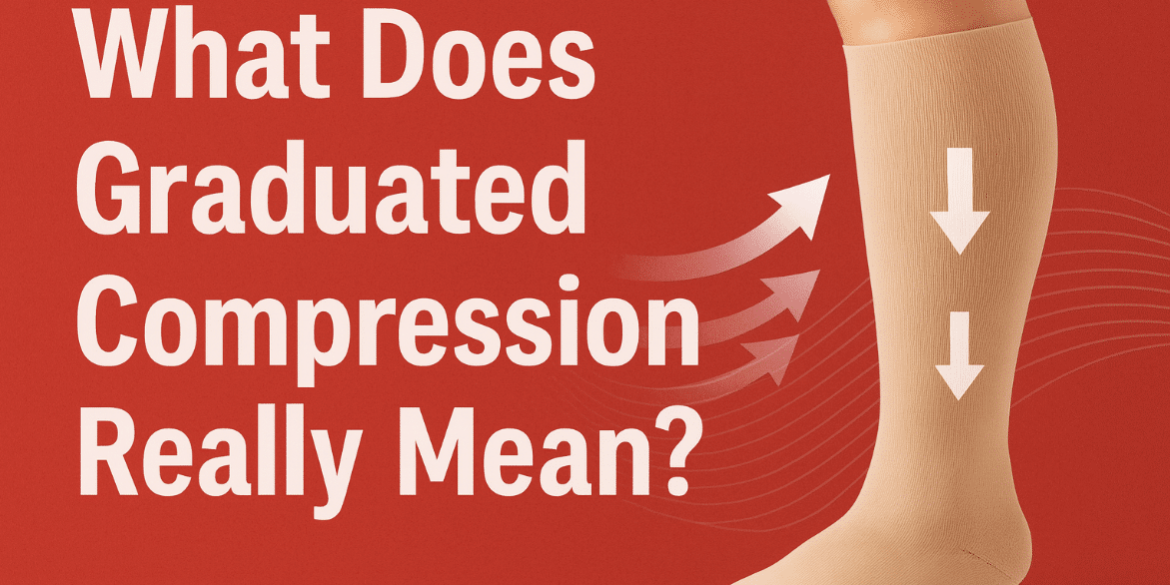What Does Graduated Compression Really Mean?
Graduated compression means the pressure in your stocking or sock is strongest at the ankle and gradually decreases as it moves up the leg. This design helps your veins push blood back toward the heart, reducing swelling, fatigue, and the risk of varicose veins or deep vein thrombosis (DVT).
Unlike standard “tight” socks, true graduated compression is measured and controlled—each millimeter of mercury (mmHg) is tested to ensure accurate support and safe performance.
The Science Behind Graduated Compression
Graduated compression helps your veins and muscles work together more efficiently. When veins are supported correctly, circulation improves and discomfort fades. The benefits include improved blood flow and oxygen delivery, reduced swelling in the feet, ankles, and calves, less leg fatigue during long days, faster recovery after surgery or pregnancy, and a lower risk of DVT during travel or extended sitting.
Even healthy legs benefit from consistent support, making graduated compression a smart choice for anyone who spends long hours on their feet or seated.
Why It Matters for Your Health
Everyday activities—standing, walking, or even sitting—put pressure on your veins. Over time, this can lead to swelling, heaviness, or visible veins. Graduated compression offsets that strain by supporting circulation, preventing pooling, and keeping legs feeling lighter and more energized.
How Venosan Stockings Are Different
Every pair of Venosan compression stockings is lab-tested and quality-controlled to deliver precise, medical-grade compression. Venosan has been perfecting compression technology for decades, combining Swiss engineering with comfort and modern style.
Each pair is tested for accuracy and durability, available in multiple compression levels—15–20 mmHg, 20–30 mmHg, and 30–40 mmHg—and crafted with breathable, soft materials designed for all-day comfort. Venosan’s graduated compression isn’t just a feature; it’s a medical standard trusted by healthcare professionals worldwide.
Choosing the Right Compression Level
-
15–20 mmHg – Light support for everyday wear, travel, or mild swelling.
-
20–30 mmHg – Moderate compression for varicose veins, post-surgery recovery, or noticeable swelling.
-
30–40 mmHg – High compression for advanced venous issues or severe swelling (typically prescribed).
Learn more about the differences in compression levels at venosan.us.
When to Start Wearing Graduated Compression
Compression wear isn’t only for those already experiencing issues. Many people start early to prevent discomfort or swelling. It’s especially helpful for those who sit or stand for long periods, travel often, are pregnant or postpartum, or notice tired legs after work.
Starting early helps maintain circulation health and prevents issues before they begin.
The Bottom Line
Graduated compression isn’t about tightness—it’s about precise, comfortable support that keeps your legs feeling light and strong. When done correctly, it improves circulation, reduces swelling, and promotes overall leg health.
With Venosan, you’re not just wearing socks—you’re wearing science in motion.
Ready to feel the difference?
Explore Venosan’s medical-grade graduated compression stockings at venosan.us/all-products

